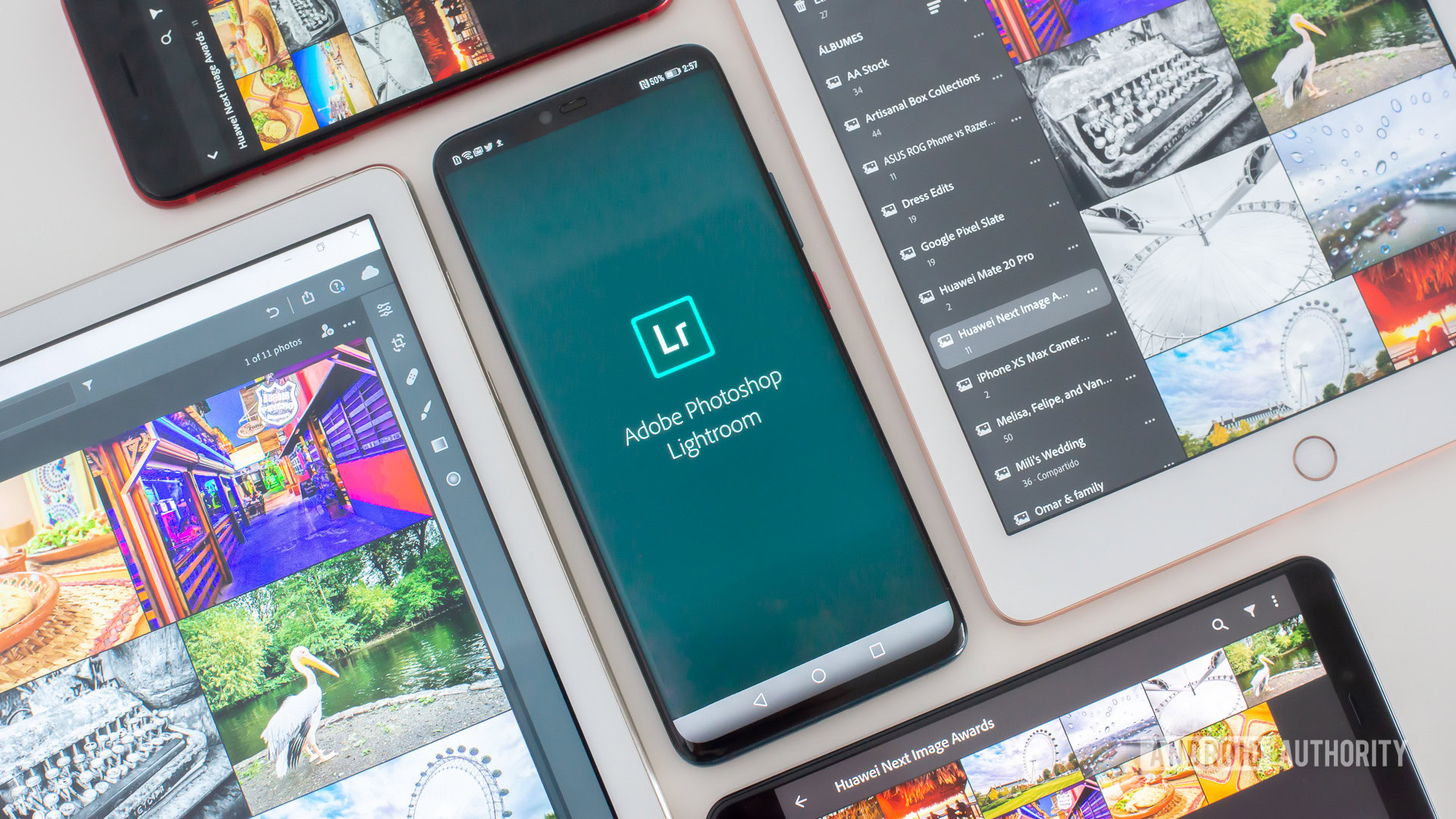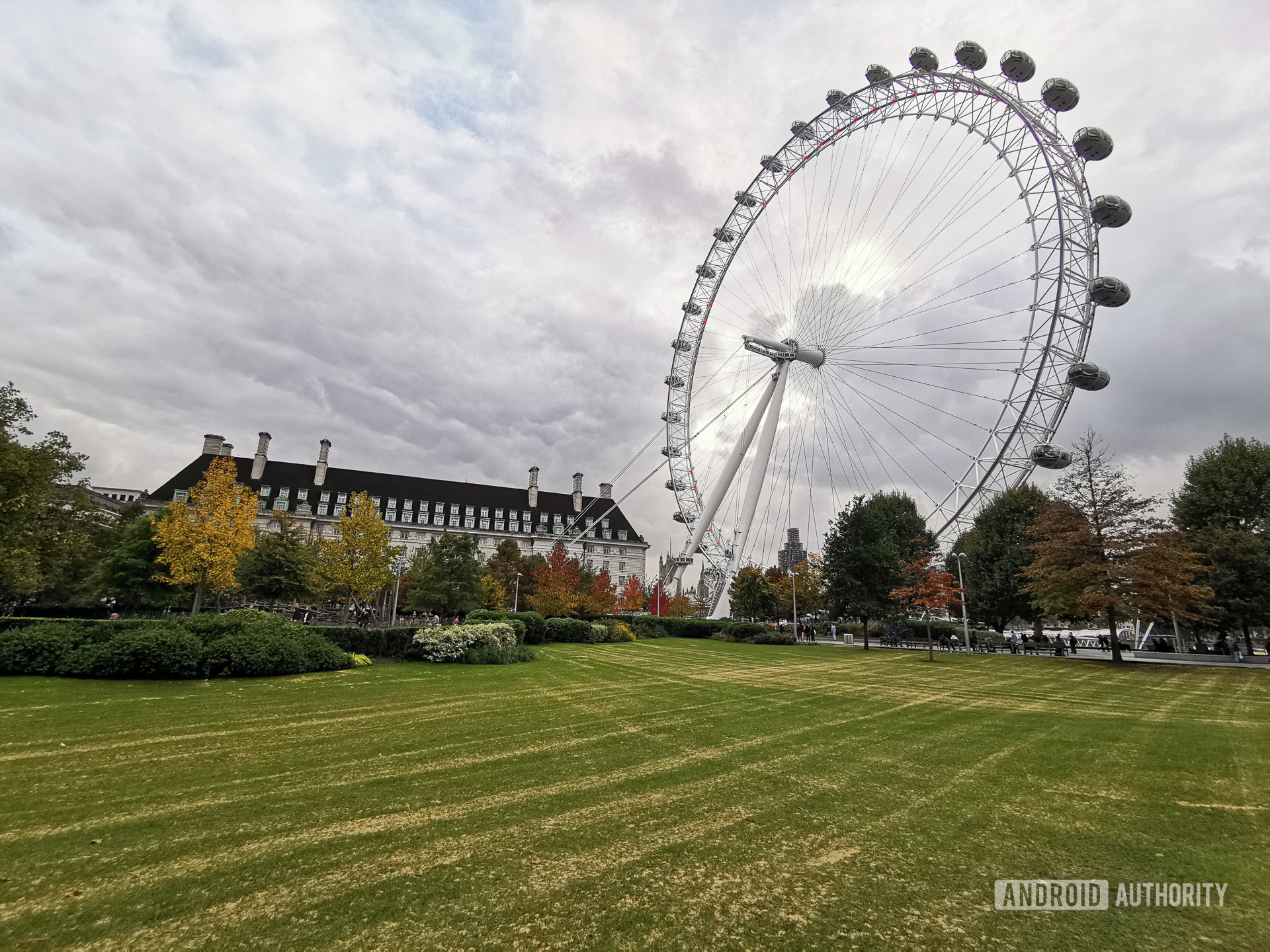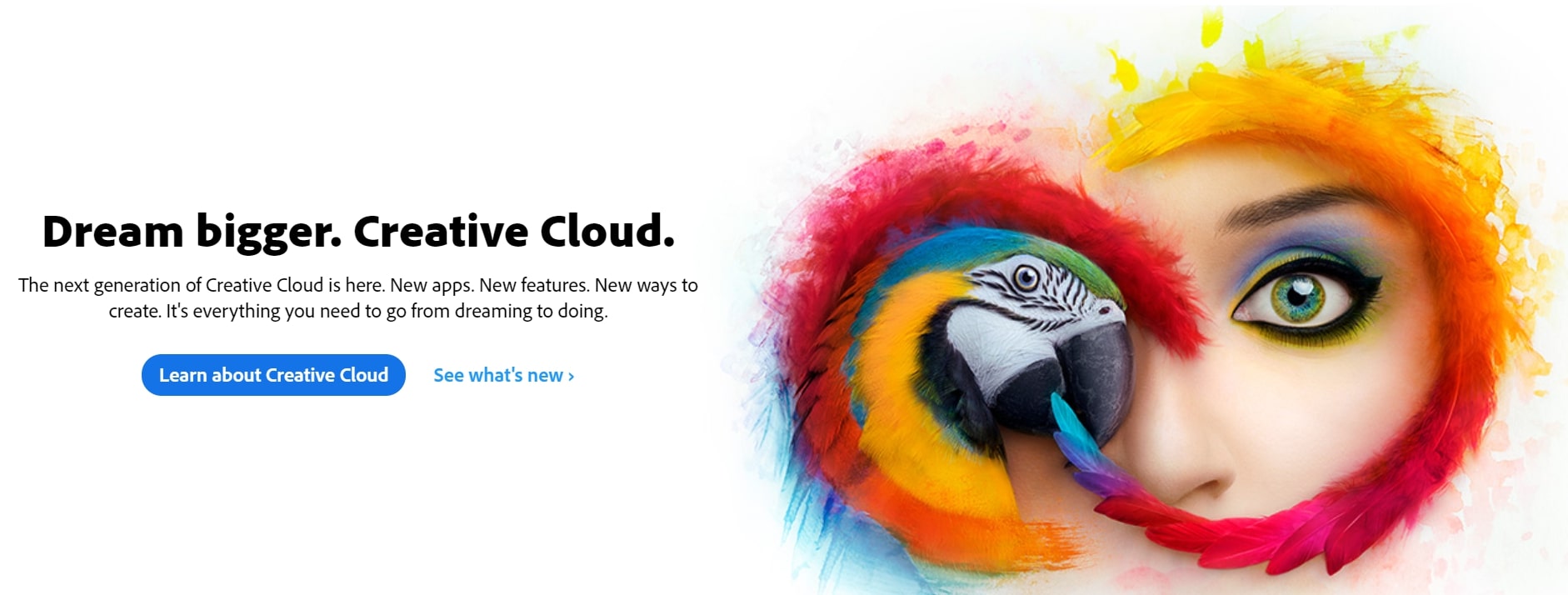Affiliate links on Android Authority may earn us a commission. Learn more.
10 Adobe Lightroom tips for improving your smartphone photos

Smartphones can take amazing photos, and Lightroom is one of the best mobile photo editing tools, but using the app can be tricky for photography beginners. This Lightroom Mobile tutorial is not meant to teach you what every option and slider does, but it includes some great Lightroom tips to get you started. We aim to show you the main edits you can use to take your smartphone photos to the next level.
Before we start: Here are some photography terms you should know
Taking an image through each tip
Each section will come with a brief explanation of how these Lightroom tips affect an image and how to manipulate it. In addition, I have decided to grab a smartphone image and take it through the editing steps covered in each section. This will show you how much of a difference editing can make.
Here is the starting photo:

Additionally, we will add some extra tips at the end of the post, in the FAQs section. This will include extra editing techniques that don’t really work with this sample photo.
Adobe Lightroom pricing and details

Adobe Lightroom, as it is labeled in the Google Play Store, is simply the mobile version of Lightroom CC (where CC stands for “Creative Cloud”). While you can download the mobile Adobe Lightroom app and take advantage of many features for free, using this software to its full extent requires an Adobe Creative Cloud subscription.
Adobe Creative Cloud prices:
- Photography plan ($9.99/mo): Lightroom, Lightroom Classic, Lightroom Mobile, Photoshop for desktop, Photoshop for iPad, and 20GB of cloud storage.
- Lightroom plan ($9.99/mo): Lightroom, Lightroom Mobile, and 1 TB of cloud storage.
- Photography Plan ($19.99/mo): Lightroom, Lightroom Classic, Lightroom Mobile, Photoshop for desktop, Photoshop for iPad, and 1 TB of cloud storage.
- All apps ($52.99/mo): This plan includes all Adobe apps and 100GB of cloud storage.
Free users miss out on these features:
- Cloud storage: You are not paying for cloud storage, so that feature is out the window.
- RAW support: Yes, you can edit RAW photos straight from your phone, but only if you pay.
- Adobe Sensei: Adobe Sensei identifies and tags photos for you. It comes in handy when searching specific images. It also has People View, which uses facial recognition to organize pictures by person.
- Selective adjustments: Want to edit only specific areas of a photo? Not for free, you won’t!
- Healing brush: Get rid of the trash, dust, or any imperfection with the healing brush.
- Geometry: This is an excellent tool for fixing perspective and straightening your photos.
- Web sharing: You can showcase images through the web. Simply invite people or share a link. Users can like and comment on photographs.
- Batch editing: Batch editing saves time, so Adobe figures people will pay for it.
- Premium presets: Paid subscribers get access to extra presets that meet “industry standards.” Additionally, subscribers can sync their profiles across devices, as well as purchased ones.
With all that in mind, you will have to decide whether a subscription is worth the cash or not. Just be mindful that we will be including some of these paid features in this list of Adobe Lightroom tips and tricks.
Shoot RAW (you can do it with Lightroom!)

The first Lightroom tip we can give you is to shoot RAW if your phone supports it. Check out our dedicated post if you don’t know what RAW is. In a nutshell, a RAW photo is an uncompressed image file. It stores more data and offers advanced editing freedom. A user can adjust white balance, exposure, pull more detail, and more, without affecting image quality as much. On the contrary, JPEG files are compressed, edited by camera software, and have less data to work with.
More: Learn what RAW is and why you should take advantage of it
Not all smartphones output RAW image files, but it is becoming more popular with the latest handsets. One of Lightroom’s main features is that it can edit RAW photos. And not just your phone’s RAW files; it’s possible to transfer other cameras’ RAW images to your phone’s local storage and edit them using the mobile app. Alternatively, one can use cloud syncing to upload pictures through another computer, tablet, or smartphone, then edit them on Lightroom mobile.
- Pro tip: If your stock camera app can’t shoot RAW, you can take advantage of Lightroom’s camera function. The Lightroom app has its camera function and supports RAW output.
Take a look at Lightroom presets
Think of Lightroom presets as filters, but they are more customizable and can be pretty complex if you dig into them. When editing a photo, scroll through the options below to find the Presets section. Select it, and you can look through a series of effects and edit styles to quickly choose from.
Not liking the presets you see? You can create your own or even download them. Many photography enthusiasts and professionals online offer their presets for download (often for a price). These can be synced to your mobile device via the cloud, using the desktop Lightroom app.
Presets are nice quick edits for those who don’t want to spend much time tinkering with post-processing. Keep reading if you want more control over your shot’s outcome.
- I looked through available presets until I found one that didn’t change the integrity of the image too much, but enhanced the colors and overall look of the photo. Turquoise & Red was under the Creative section of the Presets. This is a demonstration of what you can achieve with a simple preset. This preset will be removed, and I will edit the photo myself throughout this article.
Fix exposure and lighting in Lightroom
Smartphone cameras mostly do a good job exposing an image correctly, but they sometimes get things wrong. Sometimes creativity calls for a darker (or brighter) image than what would be considered “correctly exposed,” too. Regardless, playing with exposure controls should be your first move.
You will find these options under the Light button at the bottom of the screen. Pay close attention to the exposure slider. Move it left and right until you find the correct levels. Play with the contrast, highlights, shadows, whites, and blacks to achieve the right lighting effect.
- Increased exposure to brighten the image.
- Reduced highlights and whites to get more detail from the clouds.
- Increased shadows and brightened blacks to get more detail from foliage and building.
- Increased contrast for more striking colors.
Related: Learn to shoot photos in manual mode
Fix white balance
To fix the white balance, go to the Color section. White balance is customized with the temperature and tint sliders. Temperature can make an image more blue or orange, while tint goes from green to magenta.
Also: What is white balance?
You can play with these creatively to add special effects to your photos. If you are looking for a realistic white balance, you can also use the eyedropper tool. Simply tap on the eyedropper icon and select a white or neutral color (gray) area within your shot to achieve an accurate white balance.
Make colors pop
The color section will also have vibrance and saturation sliders. I like using these to make colors pop more, but you can also move them to the left to mute them. Just be careful not to go too crazy with these options. Increasing the vibrance and saturation by much can give your images an over-processed look.
Also read: What are the M, A, S, and P modes on your camera?
- Increased saturation and vibrance to make colors pop more.
Reduce noise
Got a grainy image? This is common when taking shots in the dark, as the ISO needs to be increased, therefore producing more noise. Images can be cleaned up by going to the Detail section and using the noise reduction slider. Be careful not to use it too much, as it softens images. This can reduce detail and make skin look too smooth.
By the way, you can also add grain if you want to give your photos an interesting look. The grain amount slider is under the Effects section.
- The image was very low on noise, so you likely won’t notice the difference here. I reduced noise by 10 just to clean up grain visible when zooming in.
Fix perspective
A bad perspective is one of the most frustrating photography mistakes you can come across, especially when you want a photo to be truly straight. Don’t get too upset next time your image is slightly crooked; most times, it can be fixed using the geometry tool in Lightroom. Just find the Geometry section in the option carousel and tap on it.
You can use the sliders to straighten up the photo. I also like using the Guided Upright tool. Simply tap on the Guided Upright icon and draw lines following crooked elements, both vertically and horizontally. The system will automatically straighten the image accordingly.
- This photo’s perspective is skewed because of the wide-angle lens. I slightly fixed this by using the distortion slider. I didn’t want to go too far because it would cut essential parts of the image off, but the trees are now a little more straight, as is the building in the back.
Crop
Sometimes fixing perspective is a little too much. Maybe your photo just needs some trimming. In this case, go to the Crop section in Lightroom. Rotate and crop accordingly. Make sure to keep composition in mind, as cropping an image too little or too much can leave it worse. Our best Lightroom tip would be never to be scared of cropping!
- The grass area was overpowering. It takes attention from the London Eye and the building next to it. I cropped a large part of it to better focus on the subject while also keeping the beautiful greenery visible.
Remove unwanted objects
Sometimes you take a fantastic photo only to find out later you also captured an annoying piece of trash next to your subject. This also happens when shooting random objects, which can have dust, dirt, lint, and other annoying distractions. Maybe you don’t want a portrait to show your friend’s latest pimple. Thankfully, Adobe’s software is genius, and it can help you get rid of imperfections.
Also: Consider getting some of your favorite smartphone photography accessories
Select the Healing option to clean your image up. Tap and drag up/down on the icons to the left to select your healing brush’s size, feather, and opacity. Tap on the imperfection and make sure your brush covers it completely. Alternatively, you can tap, hold, and drag to cover more area. The app is smart enough to pick the right area of the image to heal from, but you can drag the selections around if it gets things wrong.
- There aren’t many elements I would like to remove from this image. I got rid of a few heads and far away people on the left side of the image, under the building, just to show you what the tool can do.
Selective edits and effects
Selective edits can help you customize specific areas within your image. This tool is useful when a section of your photo is overexposed, or maybe you just want to make something darker to bring more attention to your subject. These are a couple of examples, but you can selectively alter many things, such as color, white balance, sharpness, noise, etc.
Tap on the Selective section in the Lightroom app, press the “+” button, and pick which kind of selection you want. The brush will let you manually select areas within a photo as you wish. You can also use oval selective edits and gradients. The latter can be used to fade effects through an image smoothly.
After selecting the area you want to customize, just start editing as you wish using the buttons below. You will find Light, Color, Effects, Detail, and Optics options.
- Used the gradient tool to darken the area on the left side of the sky. Made it darker to pull more cloud details and make the sky bits bluer.
Original photo vs final edit
A great photographer is good at both shooting and editing. There is much more you need to learn about editing, but these Lightroom tips are sure to help you greatly enhance your image quality.
Lastly, here is a comparison between the original image and the final edit with all Lightroom tips applied.
FAQs
Q: How do I blur the background in Lightroom?
A: Smartphone cameras and basic lenses make it very hard to achieve a bokeh effect, but you can recreate it through editing. It won’t look the same, but at least it’s possible. Just Go to Masking, and tap on the + button. You can either use the Select Subject or Select Sky functions. If those don’t apply to your needs, you can also use the Brush function to select what you want to blur. Once you make your selections, go ahead and tap on Effects and reduce Texture. You can also go to Detail and reduce Sharpness. This will essentially bur out the selected sections.
Q: How do I add a watermark in Lightroom?
A: Lightroom used to be pretty bad at watermarking, but the feature has been dramatically improved. The process is simple and streamlined right into the exporting process. When you’re done editing a photo, tap on the Share button in the top-right corner. Pick Export as, toggle on Include Watermark, hit Customize, and select whether you want to use Text or Graphic as a watermark. Make your selections and hit Back. Tap the checkmark to export the image with the watermark.
Q: How do I whiten teeth in Lightroom?
A: This is a common edit people want to do, but we didn’t have any humans featured in our sample image. Here’s how to do it, though. While editing the picture, tap on Masking, hit the + button, select Brush, and highlight the teeth. When done, just go to Color. From here, you’ll have to use common sense to get the teeth whitened. Usually, teeth are yellow, so simply edit the Temperature by moving the slider towards the bluer side. Additionally, you can reduce the Saturation. Tap the checkmark when done.
Q: How do I smooth skin in Lightroom?
A: Skin is another ordinary edit people want to do, especially in close-ups. To do this, tap on Masking, hit the + button, select Brush, and highlight the skin you want to smooth. Go to Effects and reduce the Texture. Additionally, you can go to Detail, increase the Noise tool, and/or minimize Sharpness. Tap the checkmark when done.
Adobe Lightroom is one of our favorite photo editors, but we know there are other alternatives you might prefer. We have a list of the best Android photo editors, if you need help finding an option. We happen to like Snapseed, as it offers most of these features for free. Additionally, you might want to up your game with one of the best camera phones, or DSLRs.